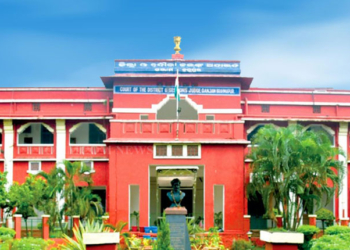Bhubaneswar: While the Orissa High Court has scheduled January 18 for an important hearing on elephant deaths, the state witnessed a record number of human deaths due to man-elephant encounters.
Between April 2019 and March 2020, 117 people died in man-elephant encounters, surpassing 115 human deaths recorded in a year previously. It is apprehended that human deaths will rise further during the paddy harvesting season in the state.
In 2022, there were 202 incidents of man-elephant encounters across Odisha. From April 2019 to March 2020, the state witnessed 204 such encounters. The disturbing picture of man-elephant conflict was observed when a Division Bench of the Orissa High Court comprising Chief Justice S Muralidhar and Justice MS Raman postponed the next hearing on the PILs concerning elephant deaths on January 18.
According to wildlife experts, elephants were venturing into newer habitations in search of paddy and other farm produce as the forest cover, as well as food for the elephants, was diminishing rapidly. Elephants, especially the males of the species, have five times greater tendency to go for crop raids than their female counterparts.
“They are straying into human habitations due to the fragmentation of elephant corridors. Their movement has been obstructed as the state government is going in for blind expansion of industrial, mining and road projects,” said Biswajit Mohanty, a wildlife expert.
Elephant movements were noticed in areas where people were not habituated to facing the mammals previously. Places like Kendrapara and Puri have now seen elephant movements. The Nabarangpur district recently recorded a rare human death in an elephant attack.
Last week, four people in Odisha’s Angul district were trampled to death by a male adult elephant, which went on a rampage in different villages.
The Odisha government identified 14 elephant corridors about two decades ago, but they were fragmented. These corridors should have been kept free for elephant movements as Sukumar, honorary professor of the Indian Institute of Science, Bengaluru, said during a presentation before the Orissa High Court in December 2022.
“The Mayurbhanj elephant reserve in Odisha has been notified and is a very good reserve. The Sambalpur Elephant Reserve is not adequate in size. While the area of the reserve is about 400 sq km, the elephants’ range of movement is about 1,000 sq km. The Mahanadi Elephant Reserve is more than 2000 sq km. There is a need to strengthen the corridor between the Sambalpur Elephant Reserve and the Mahanadi Reserve,” said Sukumar.
“Both the Sambalpur and Mahanadi elephant reserves can be linked with an elephant corridor. The two reserves, which are home to 75 per cent of the elephant population, hold enormous potential for elephant conservation. The remaining 2 per cent of the elephants are roaming in other areas,” he pointed out.
Citing the importance of the Nuagaon-Baruni and Hadgarh-Kuldiha corridors for the free movement of elephants, he said, “In the Nuagaon-Baruni corridor, there are obstacles to the free movement of elephants due to the ongoing construction of the right and left main canal of the Manjhor irrigation project. These two canals do not have any ramps or overpasses for animals to cross.”
“Similarly, in Hadgarh-Kuldiha, there are more than 100 stone quarries obstructing the movement of elephants,” the well-known conservationist pointed out.
According to Sukumar, “The Odisha Forest department should immediately initiate steps for securing the two important corridors— the Nuagaon-Baruni and the Hadgarh-Kuldiha corridors. The seven other corridors listed in the Wildlife Trust of India report should be taken up subsequently,” he said.



















